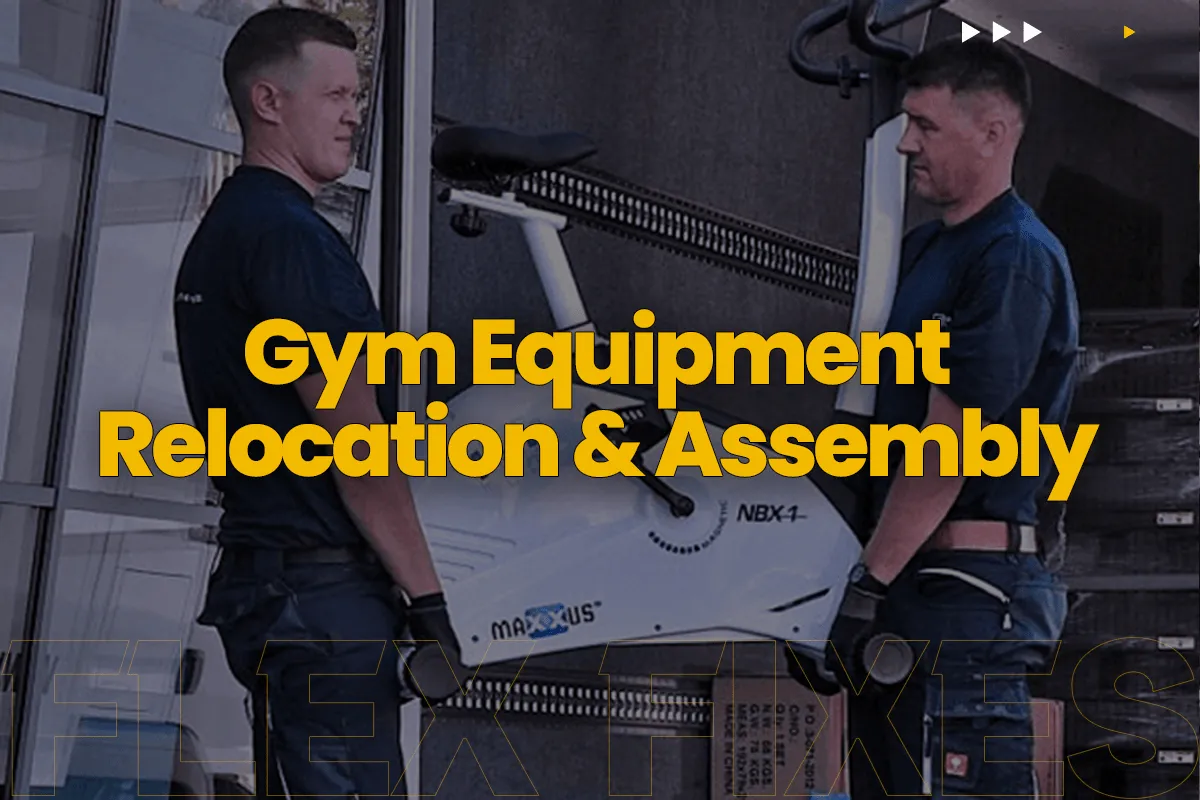How to Relocate Your Gym Equipment Without Damage or Downtime

Strong 8k brings an ultra-HD IPTV experience to your living room and your pocket.
Relocating your gym equipment—whether it’s for a home gym upgrade or moving an entire fitness center—is no small task. These machines are bulky, heavy, and often expensive. Without proper planning, you risk not only damaging your equipment but also causing unnecessary downtime that disrupts your fitness routine or business operations. This comprehensive guide outlines how to relocate your gym equipment without damage or downtime.
Hire Professional Gym Movers
If your budget allows, hiring a professional gym equipment relocation service can be a game-changer. These experts have the tools, experience, and muscle power needed to move heavy machinery with precision.
Benefits of hiring professionals:
Reduced risk of injury or equipment damage
Specialized dollies, harnesses, and padding materials
Insurance coverage in case of accidental damage
Faster turnaround with less downtime
Always check reviews, credentials, and insurance coverage before hiring any movers.
Plan Your Gym Relocation in Advance
The first step in a successful relocation is meticulous planning. Start by determining the move-out and move-in dates, and coordinate them to minimize disruption.
Checklist:
Create a detailed inventory of all gym equipment.
Label and categorize machines based on weight and sensitivity.
Plan the new gym layout in advance to streamline the setup process.
Schedule the move during off-peak hours or gym downtime.
Planning ahead ensures you avoid last-minute surprises that can lead to equipment damage or delays in reopening your gym.
Disassemble Equipment Properly
Large gym machines like treadmills, ellipticals, weight benches, and cable machines should be disassembled before the move. Attempting to move fully assembled equipment increases the risk of damage and injury.
Tips for Disassembly:
Refer to the user manual for specific disassembly instructions.
Take photos during each disassembly step to aid reassembly later.
Use labeled zip-lock bags to store screws, bolts, and small parts.
Keep all accessories, wires, and user manuals in clearly marked boxes.
Proper disassembly protects delicate components and makes the equipment easier to handle.
Use the Right Packing Materials
To prevent scratches, dents, and internal damage, you’ll need high-quality packing supplies.
Essentials include:
Bubble wrap for delicate parts
Moving blankets and furniture pads
Shrink wrap for securing cables and padding
Heavy-duty cardboard boxes for smaller accessories
Packing tape and labels
Wrap all surfaces thoroughly, especially screens, consoles, and touch-sensitive parts. Use blankets to cushion sharp edges and metallic surfaces.
Secure Heavy Equipment for Transport
Gym equipment must be loaded carefully into transport vehicles to avoid movement during transit. An improperly secured treadmill or multi-station machine can topple and cause significant damage.
Transport Tips:
Use tie-down straps to secure equipment to the vehicle.
Place heavier items on the bottom and lighter ones on top.
Use non-slip mats under heavy machines.
Make sure there's no room for shifting or sliding during the drive.
Transport safety is just as important as careful packing.
Inspect and Clean Equipment Before and After the Move
Before packing, take time to clean and inspect your equipment. Dirt and debris can damage internal components if left unchecked during a move.
Cleaning Tips:
Use a mild disinfectant on surfaces, grips, and seats.
Clean out fans, air vents, and cable tracks.
Tighten any loose bolts or screws.
Once the move is complete, inspect each piece of equipment again for any signs of damage or wear. This helps in identifying issues early and ensuring your gym is move-in ready.
Test All Equipment After Setup
Before declaring your gym open for business—or resuming your personal workouts—test each machine for functionality. Even minor bumps during the move can lead to misalignment or electronic issues.
Test Checklist:
Power on all electronic machines and check displays.
Ensure that treadmills, bikes, and ellipticals run smoothly.
Check resistance levels and weight stacks for proper operation.
Confirm that all cables and pulleys are functioning correctly.
Prompt testing helps you avoid future breakdowns or injuries.
Update Your Insurance and Warranty Records
Moving your gym equipment may affect your insurance and warranty coverage. Contact your insurer and the equipment manufacturer to update addresses and confirm whether the move impacts your coverage.
Action Steps:
Notify your insurance provider about the relocation.
Check if any warranties require reinstallation by authorized technicians.
Document all equipment conditions with photos post-relocation.
This ensures you stay protected in case of any future claims or maintenance needs.
Train Your Team (If Applicable)
For commercial gym relocations, your staff must be familiar with the new layout and equipment setup. Provide orientation or quick training to help them guide customers and troubleshoot basic issues.
Tips for Staff Training:
Walk through the new layout and machine positions.
Provide printed reassembly instructions or videos.
Assign roles for routine checks and machine care.
Well-informed staff contribute to a smoother reopening and better member experience.
Communicate With Clients (For Fitness Businesses)
If you operate a gym or fitness center, transparent communication is key to maintaining customer trust during the move.
Customer Communication Ideas:
Send out newsletters with relocation updates.
Announce temporary closures with clear timelines.
Offer incentives like discounted memberships post-move.
Share photos of the new setup to build anticipation.
Good communication can turn a temporary inconvenience into an opportunity to strengthen your brand.
Final Thoughts
Relocating gym equipment without damage or downtime requires more than just muscle—it takes planning, the right tools, and a systematic approach. Whether you're moving a personal home gym or an entire fitness center, following these expert strategies ensures your equipment stays intact and ready for action at your new location.
Note: IndiBlogHub features both user-submitted and editorial content. We do not verify third-party contributions. Read our Disclaimer and Privacy Policyfor details.







